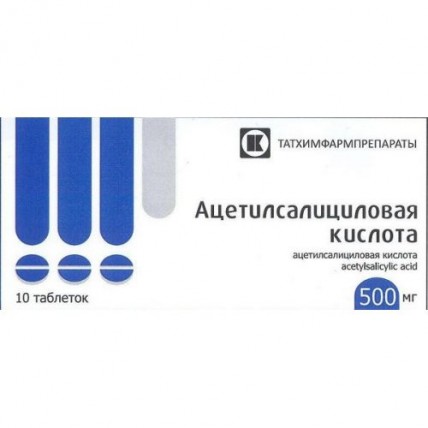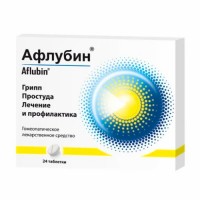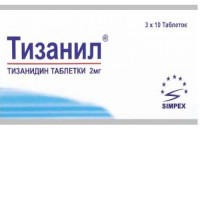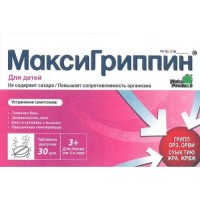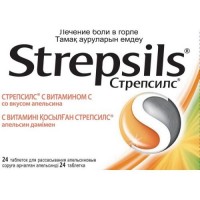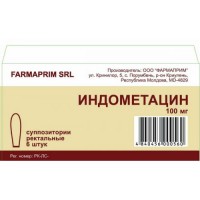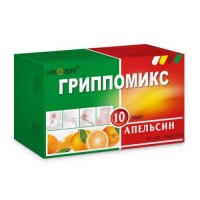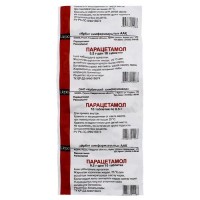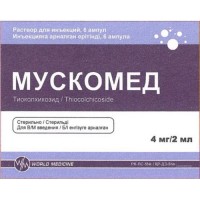Acetylsalicylic acid 500 mg (10 tablets)
- $2.50
The instruction for medical use of ACID ACETYLSALICYLIC medicine the Trade name Acetylsalicylic acid the International unlicensed name Acetylsalicylic acid the Dosage form of the Tablet of 500 mg Structure One tablet contains active agent: acetylsalicylic acid of 500 mg excipients: potato starch, povidone (polyvinylpirrolidone low-molecular, plasdon K-17), calcium stearate, citric acid monohydrate, talc. The description of the Tablet of white color, slightly marble, ploskotsilindrichesky with risky and a facet, flavourless or with a slight characteristic smell. Pharmacotherapeutic group Analgetics. Other analgetics-antipyretics. Salicylic acid and its derivatives. Acetylsalicylic acid. The ATX N02BA01 code the Pharmacological Pharmacokinetics At properties intake is quickly absorbed, mainly from proximal department of a small intestine and, to a lesser extent, from a stomach. Presence of food at a stomach considerably changes absorption of acetylsalicylic acid. Acetylsalicylic acid is distributed in the majority of fabrics and fluid mediums of an organism. Gets through a blood-brain barrier. It is metabolized in a liver by hydrolysis with formation of salicylic acid with the subsequent conjugation with glycine or a glucuronide. About 80% of salicylic acid contact proteins of blood plasma. Elimination half-life (Т½) of acetylsalicylic acid makes about 15 minutes, salicylic acid - about 3 hours. It is removed by kidneys, mainly, in the form of salicylic acid. Pharmacodynamics Non-steroidal anti-inflammatory drug. Acetylsalicylic acid has anti-inflammatory and febrifugal effect and also oppresses aggregation of thrombocytes. The mechanism of action is connected with oppression of activity of cyclooxygenase (COG) – the main enzyme of metabolism of arachidonic acid, being the predecessor of prostaglandins which play a major role in pathogenesis of inflammation, pain and fever. The significant analgeziruyushchy effect of acetylsalicylic acid is caused by two mechanisms: peripheral (suppression of synthesis of prostaglandins) and central (inhibition of synthesis of prostaglandins in the central and peripheral nervous system). Owing to reduction of products of prostaglandins also their influence on the centers of thermal control decreases. At use in the raised doses can inhibit synthesis of a prothrombin in a liver and increase a prothrombin time. Indications - a pain syndrome of weak and average intensity of various etiology (including in a headache - migraine, a toothache, neuralgia, myalgia, articulate pain, a chest radicular syndrome, a lumbago) - the increased temperature (fever) in flu, catarrhal (SARS) and others infectious - inflammatory diseases Before use to consult with the doctor! The route of administration and doses accept Acetylsalicylic acid inside, after meal, washing down with a large amount of liquid. To adults and children 15 years with the body weight of 50 kg are more senior and more at a feverish and pain syndrome it is recommended to accept on 0.25 - 0.5 g (1/2-1 tab.) 3 - 6 times a day. The interval between receptions has to make not less than 4 hours. Maximum single dose of 1 g. The maximum daily dose makes 3.0 g. If at administration of drug of acetylsalicylic acid within 5 days a pain syndrome or within 3 days the increased temperature remain, it is necessary to stop treatment and to see a doctor. Side effects - abdominal pain, heartburn, nausea, vomiting obvious (vomiting with blood, a tar-like chair) or the hidden symptoms of zheludochno-intestinal bleeding which can lead to an iron deficiency anemia - erosive cankers (including with perforation) a zheludochno-intestinal path - Reja/Ray's syndrome (the progressing encephalopathy: nausea and ukrotimy vomiting, breath disturbance, drowsiness, spasms, fat infiltration of a liver, a giperammoniyemiya, increase in level of nuclear heating plant, ALT) - dizziness, sonitus (usually are signs of overdose) - increase in risk of bleeding - skin rash, anaphylactic reactions - a bronchospasm, a Quincke's edema At prolonged use: - interstitial nephrite, a prerenalny azotemia with increase in creatinine in blood and a hypercalcemia, an acute renal failure, a nephrotic syndrome - papillary necrosis - blood diseases (anemia, an agranulocytosis, a Werlhof's disease) - aseptic meningitis - strengthening of symptoms of stagnant heart failure, swell - increase in level of aminotransferases in blood At emergence of similar symptoms is recommended to stop administration of drug and to see immediately the attending physician! Contraindications - hypersensitivity to acetylsalicylic acid and other NPVP or other components of drug - erosive cankers of a zheludochno-intestinal path (in an aggravation phase) - hemorrhagic diathesis, predisposition to hemorrhages, the increased bleeding, disturbance of blood clotting (hemophilia, an angiohemophilia, telangiectasias, deficiency of vitamin K, thrombocytopenia, a trombotichesky Werlhof's disease, a prothrombinopenia) - heavy abnormal liver functions and kidneys - the combined use of a methotrexate in a dose of 15 mg a week and more - a combination of bronchial asthma, the nose recuring a polypose and near-nasal bosoms - pregnancy and the period of a lactation - the children's age up to 15 years Medicinal interactions At combined use of acetylsalicylic acid with valproic acid drugs, cephalosporins or anticoagulants increases risk of developing bleeding. At simultaneous use of drug and NPVS the main amplify and by-effects of the last. Against the background of drug treatment the side effect of a methotrexate (at reception of the last more than 15 mg/week – acetylsalicylic acid is contraindicated) is aggravated. At simultaneous use to oral gipoglikemiziruyushchy drugs – strengthening of hypoglycemic effect happens sulphonylurea derivatives –. At simultaneous use with glucocorticosteroids, alcohol intake the risk of gastrointestinal bleedings increases. Drug weakens effect of Spironolactonum, furosemide, the hypotensive and antigouty means promoting removal of uric acid. Purpose of antiacid means against the background of drug treatment (especially in doses more than 3.0 g for adults and more than 1.5 g for children) can cause decrease in high steady level of salicylate in blood. Special instructions Acetylsalicylic acid can cause a bronchospasm, an attack of bronchial asthma or other hypersensitivity reactions. Risk factors are presence of bronchial asthma, polyps of a nose, fever, chronic bronchopulmonary diseases, allergy cases in the anamnesis (allergic rhinitises, an enanthesis). Acetylsalicylic acid can increase tendency to bleeding that is connected with its inhibiting influence on aggregation of thrombocytes. It should be considered in need of surgical interventions, including such small interventions as odontectomy. Before surgical intervention, for reduction of bleeding during operation and in the post-operational period, it is necessary to cancel administration of drug in 5-7 days and to inform the doctor. At treatment of vascular diseases the daily dose of acetylsalicylic acid makes from 75 to 300 mg. As removal of salts of uric acid decreases, at predisposed patients the exacerbation (attack) of gout is possible. Features of influence of medicine on ability to run the vehicle or potentially dangerous mechanisms. During treatment it is necessary to be careful during the driving of motor transport and occupation other potentially dangerous types of activity. Overdose Symptoms: dizziness, disorders of vision and hearing, nausea, vomiting, breath strengthening. There comes oppression of consciousness up to a coma, respiratory insufficiency, disturbance of acid-base equilibrium (respiratory alkalosis, then a metabolic acidosis), the acute renal failure (ARF), shock later. Deadly intoxication is possible at reception of a dose from 200 to 500 mg/kg. Treatment: to cause vomiting or to make gastric lavage, to appoint activated carbon, depletive. Treatment should be carried out in the conditions of specialized department. Form of release and packing of the Tablet of 500 mg. On 10 tablets in planimetric bezjyacheykovy or blister strip packaging. 1 or 2 blister strip packagings together with the instruction for medical use in the state and Russian languages place in a pack cardboard. Planimetric strip and planimetric bezjyacheykovy packagings with the equal number of instructions for medical use in the state and Russian languages place directly in group packing. To Store storage conditions at a temperature not above 25 °C. To store out of children's reach! 4 years not to use a period of storage after an expiration date. Prescription status Without prescription Russia JSC Tatkhimfarmpreparaty Producer, 420091, Kazan, Belomorskaya St., 260 Ph.: (843) 571-85-58, fax: (843) 571-85-38 E-mail: marketing@tatpharm.ru the Owner of the registration certificate of JSC Tatkhimfarmpreparaty, Russia the Address of the organization in the territory of the Republic of Kazakhstan, the accepting claim (offer) on quality of medicines from consumers, responsible for post-registration observation of safety of medicine of MegaFarmPlyus LLP the Republic of Kazakhstan, YuKO, 160019, Shymkent, Abaysky district, residential district Kyzyl heat, Karasu St., 30 Ph.: 8 (7252) 45-31-23, fax: 8 (7252) 45-31-56 E-mail:
To Develop megafarmplus@yandex.kz
To Develop megafarmplus@yandex.kz
